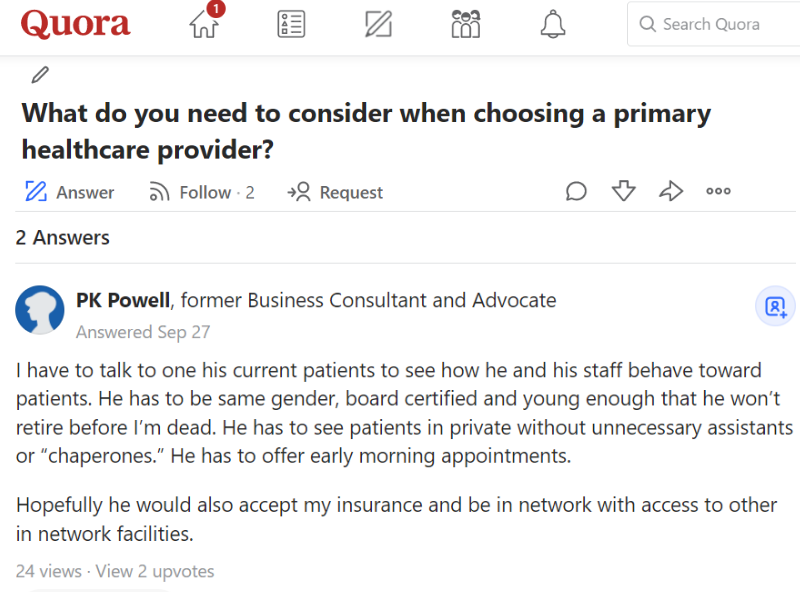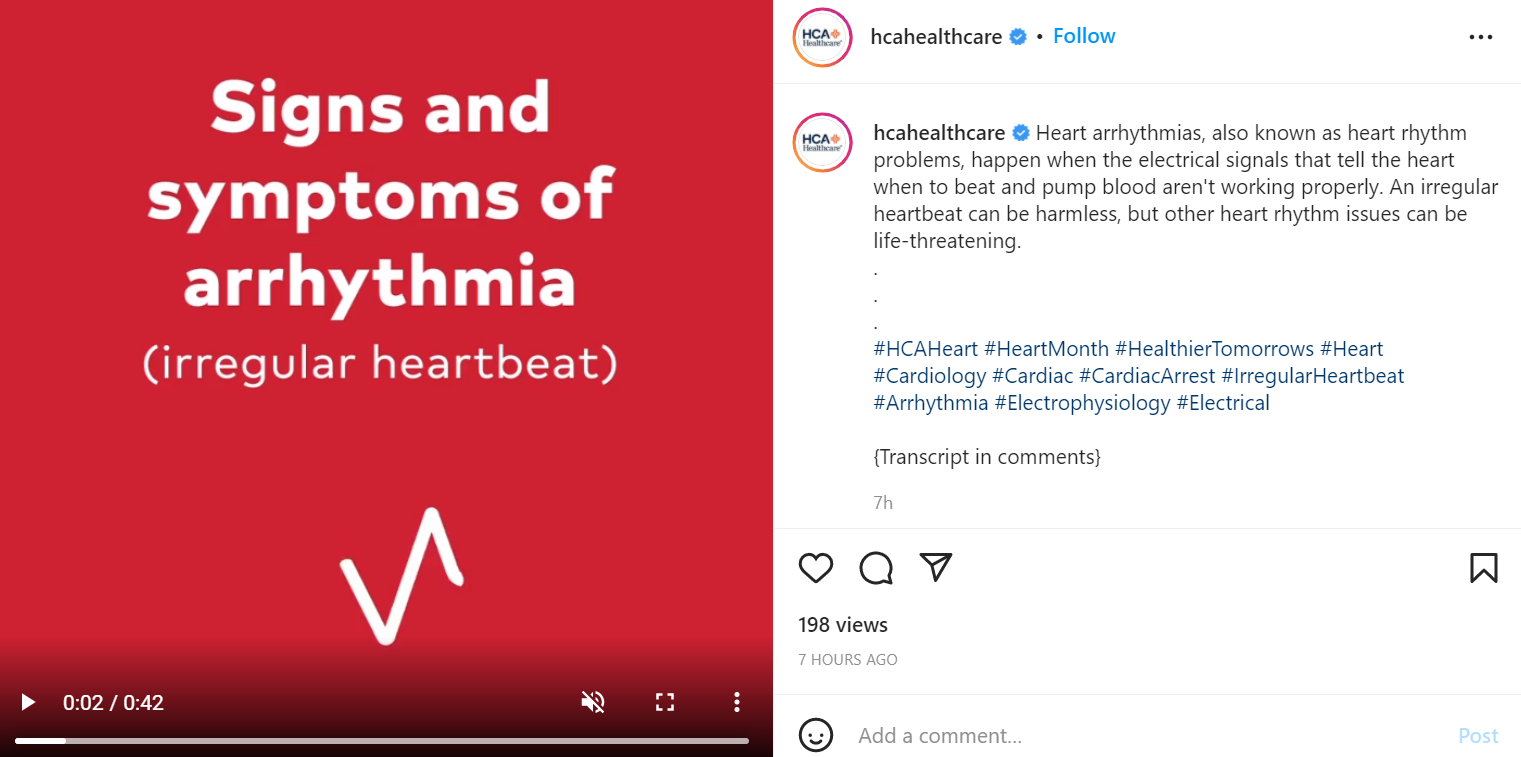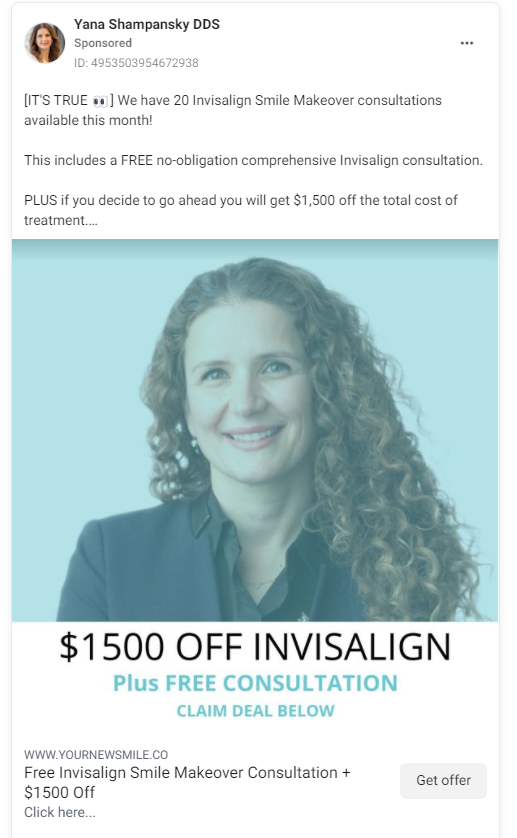In your quest to find the holy grail of digital advertising strategies, you’re likely looking for something that’s not only effective at driving revenue but cost-efficient. I should know—at Cardinal, we’re on the very same quest for our own clients.
What we’ve learned along the way is that, with the proliferation of paid advertising channels, it can be difficult to assess which ones are most suitable for your particular organization. All of them? Just a few?
The answer depends on your market and your prospective patients’ habits and channel preferences. Let’s dig in.
You Need Deep Patient Insights
It’s difficult to make a blanket recommendation for an optimal media channel mix—there’s too much variability across industries, regions, and patient demographics. To determine your own ideal mix, you’ll need to conduct market analysis and research. Your goal? To develop an intimate understanding of the patient journey and how they buy.
Don’t assume you already know! Inevitably, the organizations that take the time to dive deep reveal insights about their customers they didn’t previously know (or assumptions they didn’t realize they were making). During this deep dive, use primary research methods, such as one-on-one interviews and surveys, as well as secondary research, such as forums (Reddit, Quora, etc.), news articles, and publications.

Deep patient insights will help you develop a paid media strategy that moves prospective patients towards booking an appointment.
Align Channels with Prospective Buyer’s Stage in the Funnel
There’s a knack to understanding what your prospects want at each buying stage; once you learn those motivations, you’ll know how to build stage-appropriate ads more likely to engage. Typically, the stages of the paid media funnel break down as follows:
Problem aware: At this stage, a person knows they have an issue, but is not aware of potential solutions. In fact, they might not even be actively seeking a solution at all. Here, people are looking for authoritative information about their problem.
Solution aware: A solution-aware consumer is in the process of evaluating different solutions to their problem. They’re not quite sure which solution is best, but they’re considering options.
Product aware: At this stage, you’ll need to convince the buyer that your solution is better than the next. You’ll need to create content that overcomes objections and makes the benefits real.
Most aware: At this stage, your target audience knows what they want, may already recognize your brand, and is ready to convert. They’re often looking for an offer, discount, or incentive to get them over the line.
When you have a deep understanding of the patient journey, then you can start identifying the channels they’re most likely to use at each stage.
Channel Overview
With your research in place, consider the following channels for investment:
Paid Search
Paid search is used both at the top and the bottom of the patient journey.
Top of the Funnel:
Where do people go when they have healthcare questions? The answer is increasingly Google. Who hasn’t asked Google questions like “why do my knees ache” or “what causes red bumpy rashes.”
When those queries occur, your healthcare organization needs to be on the first page of Google. If you’re still working on your organic rankings, Google Ads can get you to the top faster.
Targeting top-of-the-funnel keywords allows you to educate prospects through blog articles and guides. Use this as an opportunity to introduce your brand to prospects in the early phases of the patient journey.
Bottom of the Funnel:
After they’ve conducted their research or when they have an urgent need, prospective patients return to Google. This is where local and near-me searches like “dermatologist near Atlanta” or “urgent care open now” are used.
As long as people continue to turn to Google for health information and to locate providers, you need to dedicate a substantial part of your media mix to Google Ads.
Social Media
People aren’t on social media looking to buy. They’re looking for entertainment, connecting with friends, or passing the time. Entertaining educational media campaigns can help capture their attention and build brand awareness and demand.
Oftentimes, people have medical issues but have yet to put a name to their problem. Or they’re ignoring an ongoing issue that’s too inconvenient to address. Talking about your awesome staff or latest equipment isn’t going to capture their attention. But a video that helps them understand their symptoms and health condition can.
Video ads offer a way to educate and position your organization as a resource. This approach has become widespread on Instagram and TikTok. Who hasn’t seen providers sharing mental health tips or physical therapists sharing at-home exercises?
Social media is a top-of-the-funnel channel play. Don’t invest in social unless you have your Google Ads strategy running like a well-oiled machine.
One last tip: for social media advertising to be cost-effective and actually drive leads, you must use a full-funnel approach.

Programmatic Advertising
After a prospect is introduced to your brand, display ads can help keep you top-of-mind.
With smart display programmatic advertising, you rely on intelligent software to automatically buy digital advertising space on different channels and platforms. You can buy ad space through an Ad Exchange, such as Google Ad Exchange and AdSense, bid against competitors (using RTB or DSP), and have your ads displayed wherever you’re the highest bidder. Here are three examples of programmatic advertising in practice:
- Google Display Network (GDN): Reach people while they’re browsing their favorite websites, checking their email, or using connected apps. GDN spans more than 200 million sites and reaches 90% of global internet users.
- Over-the-top (OTT) and Connected TV (CTV): While OTT refers to video content itself served directly to internet-connected devices, connected TVs (CTVs) are often the devices delivering the actual content. Both allow for video-driven smart display advertising that’s targeted with high completion rates.
- YouTube: Now part of the GDN, YouTube engagement is at an all-time high. You’ve probably noticed video ads while watching videos on YouTube. That’s no coincidence—you’re likely being targeted using some programmatic algorithm.
Remarketing Across Channels
Facebook, Google Ads, and most programmatic advertising platforms offer some sort of remarketing, which allows you to place strategic ads targeted at customers who have visited your website but didn’t convert (request a demo, contact you, purchase, and so on). Which remarketing channels you should use depends on your audience and their digital habits.
Remarketing gives you yet another chance to stay top of mind throughout the purchase journey and convert people who might have otherwise moved on.
Instead of taking a spray-and-pray approach, your remarketing ads should be tailored to the content that people interacted with on your website. This will ensure maximum relevancy and conversions.

Use Analytics & Reporting to Refine Media Mix
The idea here is to gain real-time insight into media performance through robust data analytics. You’ll need these insights so you can rapidly adjust campaign target audiences, creative, and so on against your ongoing performance evaluations.
The first step is to integrate various systems and data silos for a single source of truth. This will be important in establishing analytics and reporting that are both accessible and trustworthy across the organization. Additionally, you’ll need to determine your attribution model (first, last, multi-touch, linear, time-decay, u-shaped, w-shaped).
With these two pieces in place, you’ll be able to analyze campaign performance and determine which channels are delivering high-quality conversions. Every market is different, and the media mix that works for one healthcare organization might not work for you.
Invest in Conversion Rate Optimization (CRO)
After you’ve built a strong media foundation, CRO will help you improve campaign performance and increase return on investment (ROI). You can use CRO tactics to get the people who visit your site from paid media advertising to convert into revenue-generating outcomes. A download, form-fill, or demo request, to name just a few examples.
With CRO, you’re looking for opportunities to make the journey from click to conversion a lot more simple—to remove friction and persuade action. If you’re considering an investment in CRO, consider these insights from Lauren Leone, our SVP Healthcare Marketing, speaking on our Ignite Podcast:
“If you’re spending $75,000 a month or more on media, generally at that rate, unless you have a massive amount of search demand, and unless everything is absolutely brilliantly optimized, you’re going to start to see some wastage there. You’re going to start to see some ad spend that really isn’t yielding a ton. It could be some expensive non-brand terms, it could be some social traffic that’s not really converting. Or some social audiences that aren’t performing that well. Usually, there’s a little bit of wiggle room to take that money and reinvest it into CRO and see better performance across the account.”
As Leone goes on to point out, “High-spending advertising programs are fertile ground for CRO. They usually have some non-converting spend. I’m sure if you were spending $200,000 in Google Ads, you could probably look in there and find $6,000 to $7,000 or $8,000 a month that drove zero conversions. That’s not to say there’s no value to that traffic, but you could probably take it and use it for CRO and yield more results.”
Herein lie the tremendous efficiency gains yielded by CRO. Your media mix isn’t just about channels–it’s about allocating your budget to the marketing activities that will yield the greatest return.
Adjust Your Budget for Effectiveness & Efficiency
This last tip is more about mindset and culture than it is technical. To make the most of your paid media mix, you’ll need to be ready to adjust strategy and campaigns as you gain insight into performance. This can happen quickly, so you’ll need to put systems and processes in place to ensure you actually use the data and put it into action.
And you need to be ready to pivot when campaigns aren’t performing. That might mean cutting campaigns or tweaking creative that doesn’t produce results. Remember that it’s not just about clicks, conversions, or even CPA. Dig into the analytics to see which channels and campaigns are actually creating new leads and customers. Direct your funding toward the advertising campaigns that contribute to actual business results (revenue).
Conclusion: Embrace the Advantage of Pay to Play
Your competitors already are. Some of them might be siphoning valuable, high-intent traffic away from your website, landing pages, and social media channels. And some of that missed opportunity might be due to nothing more than a poorly optimized paid media mix—one that doesn’t follow the best practice laid out above.
Fear not. If you’re still wondering where to start, our team has put together a comprehensive guide to 2021 Digital Marketing Trends. This guide includes more context around paid media and how it ought to fit into your broader digital marketing strategy moving forward.

